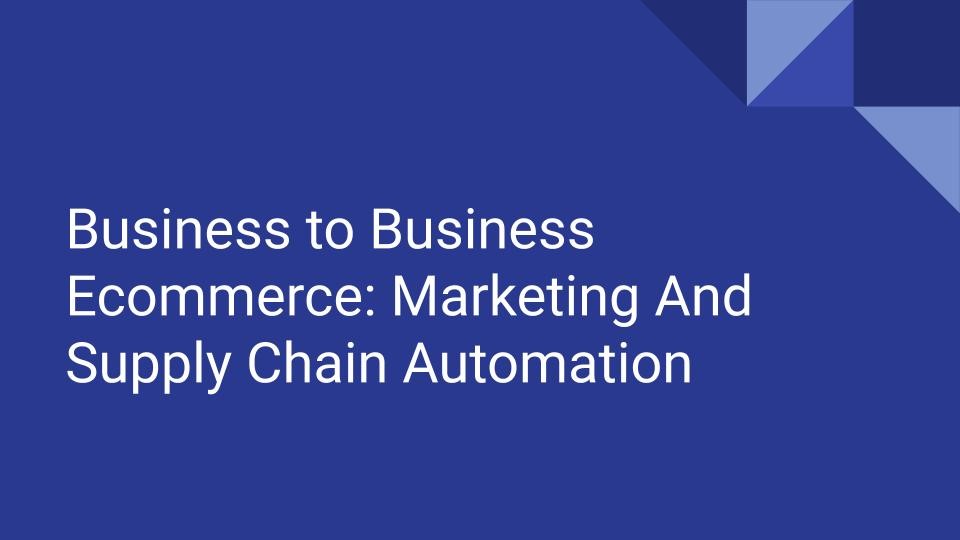
In today’s modern world, one of the best ways to grow and sustain your business is via the online medium. As social media becomes more ubiquitous, it is always beneficial to a business to ensure that it is on the platforms where its customers are. Social media is a marketing format that is utilized by up to 70% of marketing leaders in small to medium sized companies.
There is always room for improvement, and the solution to current marketing activities in business e commerce activity is via the utilization of marketing automation. Organizations that have committed to the utilization of marketing automation, have managed to secure sustainable growth via the strategies that are outlined in this business guide. Designed to be customized to your organizational needs, the ability to fill the gaps in your marketing activities and actually free your marketing team to work on future projects, enables your current product and service offerings to find the pipeline to their ultimate customer base.
In a feedback loop of a process, the ability to engage with your market audience in a digitized format, will be the best path forward in a technologically advancing world. Marketing automation software, will relieve your customers of their concerns and enable the organization to focus energy on areas such as research and development.
With the guidance outlined here, the organization will be ready to embrace the changes that make Marketing Automation such a compelling digital tool to include in the current operational portfolio. As a start, here are some compelling reasons to upgrade your Marketing Automation system, and incorporate Marketing Automation into your operational core as part of your larger strategic vision.
At the small scale, many operational activities are conducted in a manual fashion. Small businesses are often bogged down with budgets that result in their marketing efforts being one of the final items on the checklist of business operations. Marketing is often a do it yourself activity initially, and ultimately results in tasks such as customer calling, customer follow up and customer engagement being part of daily manual tasks. From an operational perspective, manual activity is an inefficient operational mode for various reasons. People do get tired, and this can affect their quality of work. Additionally, with increasing customers, the organization will have to scale the organization accordingly. Automation is the key to ensuring that scale is properly managed.
With automated systems, standard procedures such as the onboarding of new customers, the inclusion of new customers to the email campaign, post notifications and more, are all automatically done by a system. With the forecasted customer lifecycle in mind, an organization is able to predict what the customers will need at a particular point in their purchase cycle. Repetitive tasks are also better handled by machines. Where human engagement is required, the personnel for this activity will be supplied by the organization. The minimum number of persons for this task will be required, as automated systems will be able to manage the majority of the tasks needed.
From an operational perspective, operational studies have identified that marketing and sales activities are often somewhat independent of each other. Enabling a synergistic fusion of the two business focuses will facilitate a better understanding of the customer journey, and enable the business to be aligned in the process of customer satisfaction.
With marketing automation, it is possible for small and medium sized businesses to actually compete with larger scale enterprises. Identifying your key niche and allowing yourself to understand the market the key to ultimate marketing success.
Marketing automation gives you the ability to have a general overview of customer behaviour in a marketing system. With the ability to access large amounts of customer data, you can filter through the information gathered, and identify the key trends that will enable you to target your customers in the right way to generate your relationships and sales. Knowing how your customers behave is the valuable information that will enable the organization to make key strategic moves.
With more knowledge, better decisions are made, and better investment decisions are made by the organization. This guide is dedicated to the business to business e commerce relationship. This relationship involves a combination of business customers and business suppliers, who engage in a business relationship to access either a large scale product or service.
THE NATURE OF BUSINESS TO BUSINESS RELATIONSHIPS:
The business to business (B2B) e commerce relationship, involves the transactions that take place between businesses via an online sales portal such as a website. It is utilized as a means to engage customers via the online sales and marketing portal of the organization. In the instances where human interaction is required, the customers can then engage the appropriate channels of communication. With the utilization of a digital platform, the ability to scale up operations will be accommodated seamlessly. The business to business e commerce relationships takes place between a business customer and a business supplier.
MEETING THE TYPICAL BUSINESS TO BUSINESS CUSTOMER – PERSONA GENERATION
There are two perspectives in the B2B relationship – the customer and the supplier. From the customer perspective, it is actually a worthwhile effort to understand the persona of the individual who will be purchasing from the wholesaler. B2B customers have their own demographics, lifestyles and organizational goals. With an understanding of their core needs, it will be possible to understand the purchasing behavior of a B2B customer. There are differences between the purchasing behaviours of different generations, as well as organizations. Understanding the persona of the clientele that works with a supplier, will be key to ensuring that the customer is actually understood. From this framework, the communication chain from initiation to sale can be customized to suit the needs of the client. By understanding the core personas who work with your organization, suppliers can then fine tune their marketing campaigns and optimize the B2B eCommerce conversion rate.
